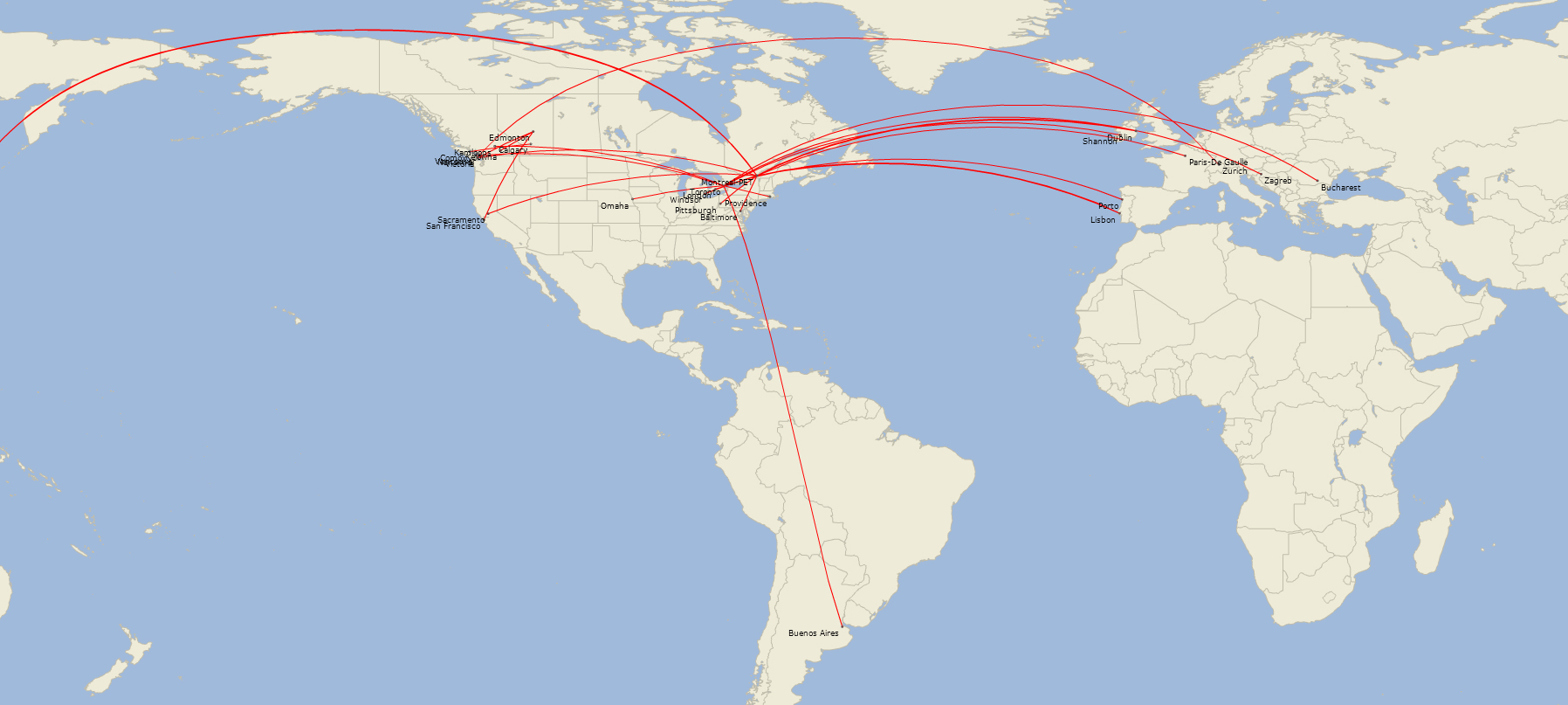Air Canada's profits may have slipped in the second quarter, but investors welcomed the company's broader financial results, which included a notable surge in revenue across nearly all Air Canada's markets.
The company's stock jumped by 6% in the hours after Air Canada released its second-quarter financial performance on 27 July.
The results were "ahead of expectations" and prompted the National Bank of Canada to boost its stock price target by C$2 to C$30, according to an investor update.
SECOND-QUARTER RESULTS
The Montreal-based carrier posted an operating profit of C$226 million ($173 million) in the period, down by 23% year on year. That decline came amid a massive surge in fuel prices that cost Air Canada an extra C$263 million.
Air Canada reported a net loss in the second quarter of C$77 million, due partly to C$186 million in charges related to the planned divestiture of 25 Embraer 190s.
Those figures aside, chief executive Calin Rovinescu ticked off a series of financial achievements during the company's earnings call.
Yields and unit revenue increased during the period, he said, and adjusted unit costs were lower than anticipated.
Air Canada "closed the quarter with record revenue, cash and liquidity", Rovinescu added.
Indeed, Air Canada's operating revenue surged by 11% year on year in the second quarter to C$4.3 billion, while passenger revenue per available seat mile (PRASM) increased by 2.7%.
Cost per available seat mile (CASM) increased by 5.6% during the second quarter, but excluding the price of fuel and certain other expenses, CASM actually declined 1% year on year.
INTERNATIONAL EXPANSION PAYS OFF
Rovinescu and his colleagues spent much of the earnings call stressing that they see strength in nearly all Air Canada's markets, while adding that Air Canada is prepared to combat new Canada-based ultra-low-cost competitors (ULCCs).
They said the company's rapid international expansion is paying off, and insist Air Canada should be able to compensate for higher fuel prices – a factor that has depressed profits industrywide – by raising fares.
Air Canada has been expanding for years as part of a strategy to carry more international-bound traffic through major hubs at Montreal, Toronto and Vancouver.
Growth continued this summer, with Air Canada launching 25 new routes to places like Baltimore, Bucharest, Buenos Aires, Dublin, Lisbon, Omaha, Paris, Pittsburgh, Porto, Sacramento, Shannon, Tokyo and Zurich.
The 25 routes Air Canada launched this summer

Air Canada
Canada reported higher yields and unit revenues in nearly all markets in the second quarter.
Its revenue from flights across the Atlantic Ocean surged by 17% year on year in the second quarter, while transatlantic unit revenues jumped 5.3%.
Likewise, Air Canada's cross-Pacific routes generated 10% more revenue year on year in the second quarter, while transpacific unit revenues increased by 4.5%, the company reports.
"The Atlantic and Pacific markets were particularly strong in the quarter", Air Canada's president of passenger airlines Benjamin Smith says during the earnings call.
Smith also called attention to the performance of the company's Canada-US routes, which generated 9% more revenue year on year in the second quarter.
"Traffic growth was reflected on all major US transborder services," Smith says.
COUNTERACT THE COMPETITION
Air Canada has been working to counter competitive pressure from two ULCCs – small but rapidly expanding Flair Airlines and WestJet's new subsidiary Swoop.
In response, Air Canada has started selling a more-restricted fare called "economy basic" – but it only offers the fare on routes where ULCCs compete, says Rovinescu.
Should circumstances warrant, Air Canada has the option to add more seats to aircraft operated by its low-care subsidiary Rouge, a move that would further reduce Rouge's unit costs, says Smith.
Air Canada has also been working to cut costs, having previously set a goal to eliminate C$250 million in expenses by the end of 2019.
The airline has already "achieved or identified" 55% of that target, says chief financial officer Michael Rousseau.
Source: Cirium Dashboard






















